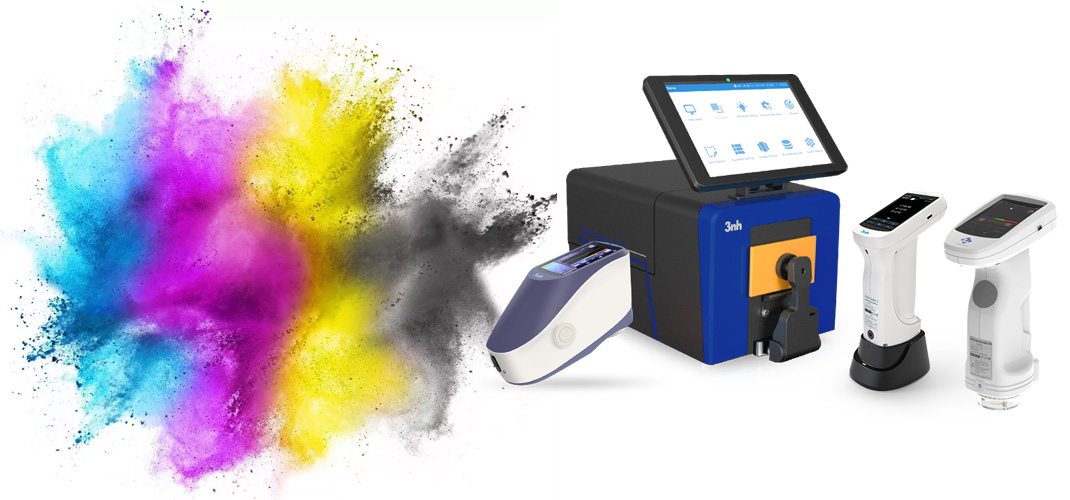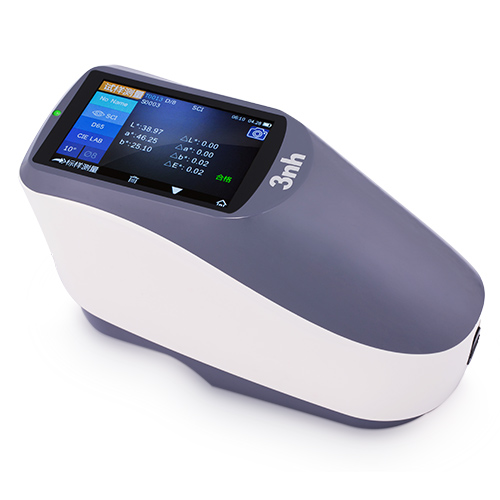A colorimeter is a color measurement device used to capture and evaluate color. It plays an important role in the color control process: brand owners and designers use them to specify and exchange colors, and manufacturers use them to monitor color accuracy throughout the production process.
Spectrophotometers can measure nearly anything—including liquids, plastics, paper, metal, and fabric—and ensure color is consistent from concept to delivery.
The spectral reflectance curve provided by a colorimeter is often considered a color “fingerprint.”
Colorimeters can measure and quantify the color of a wide variety of surfaces. They come in a range of sizes, including portable devices, large tabletop units, and in-line devices that can measure color directly on the production line.
Desktop colorimeter
Threenh technology benchtop colorimeters offer excellent accuracy and repeatability, enabling accurate color measurement and quality control throughout the supply chain. They can be used to create standards, match colors, and perform quality control in industries including automotive and paints & coatings, plastics, textiles and apparel, cosmetics, consumer electronics, paper, food and beverage, and more.
Portable colorimeter
Handheld colorimeters are lightweight and easy to carry. Samples can be easily measured in a variety of situations. They are an important tool for capturing color data on various surfaces and are widely used in printing presses, laboratories, loading areas, or other places where color measurement is required.
Threenh technology’s portable handheld colorimeter has a variety of optical structures, which can stably and accurately measure a variety of unique samples.
Online colorimeter
Online colorimeters are installed above production lines to continuously measure and evaluate color accuracy throughout the entire production process. They are widely used in industries such as papermaking, coil coating, plastics, coated glass, textiles, and automotive. These instruments can immediately detect even small deviations, enabling operators to take timely action to avoid the production of substandard products, ultimately achieving a rapid return on investment.
Why use a colorimeter?
A colorimeter is a device that measures and controls color data. It’s widely used across various industries to ensure color consistency throughout the entire process, from design to production. They can measure anything from liquids and plastics to paper and fabric.
Colorimeters use accurate color measurement to identify color deviations and defects and quantify the difference between the color of the production (sample) and the technical specifications. By collecting the data measured by these instruments, trends for continuous improvement can be identified to ensure that the requirements of ISO, ASTM and other standards are met.
How a Colorimeter Works
Under specific lighting conditions, a colorimeter can measure reflected or transmitted light across the entire spectrum and produce a visual curve to describe the color on a specific substrate.
A white surface reflects all light energy across the entire visible spectrum, resulting in a straight spectral reflectance curve with a reflectance of approximately 90% to 100%. Black absorbs almost all light energy, resulting in a flat reflectance curve close to 0%. Intermediate gray is white and black in equal proportions. Other colors have their maximum reflectance within their peak wavelength range.
Many colorimeters, such as the 3nh TS series, feature integrated cameras and color touchscreens for easy operation. Some colorimeters, such as the Ci64UV, can use a UV light source for evaluating optical brighteners and fluorescence. For printing applications, they can measure the spectral reflectance of inks and pigments.
Color Process Control: Master the Basics for Reliable Color Quality
The competitive marketplace today demands that color be not just an appearance matter, but also a matter of trust, identity, and quality. Purchasing decisions occur instantly, and color plays a significant role in them. Packaging, print, fibers, plastic, and coating businesses need to ensure consistent color reproducibility in all operations. One minor error can destroy customer trust, underprice the product, and harm long-term brand equity.

In order to produce repeatable outcomes, businesses count on color process control, a sanctioned process that employs sophisticated measurement methods, digital standards, and light analysis to ascertain correctness. Whether manufacturing flexible packaging, decorative treatments, clothing, or printed products. It is no longer an option but a necessity to excel in color measurement to ensure long-term success.
Learn more https://www.threenh.com/Company_News/Color-management-Whitepapers-Technical.html

